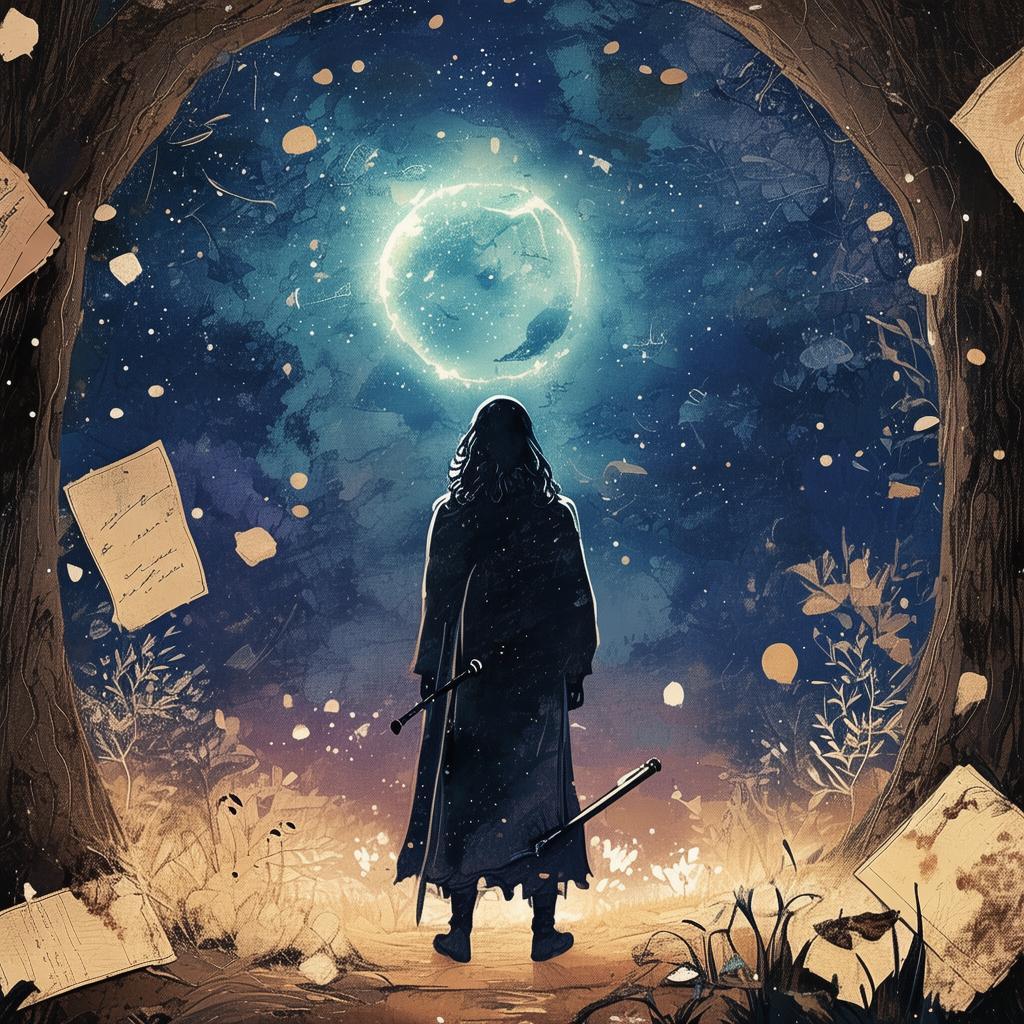The Enigma of the Ur Varselklotet: A Chronological Conundrum
In the shadowed corners of Oslo's National Museum, amidst the whispers of the old and the forgotten, a young historian named Katarina Helvik found herself captivated by an exhibit she had never seen before. The centerpiece of the display was a peculiar object known as the Ur Varselklotet, a Norwegian divination tool that was said to have the power to glimpse the future. Katarina's heart raced with excitement as she approached the case, her fingers brushing against the cool glass.
The Ur Varselklotet was unlike any divination tool she had ever seen. It was a small, ornate bowl with intricate carvings, each depicting scenes from different eras of Norwegian history. At its center, a crystal orb floated within, casting a kaleidoscope of colors and shadows that seemed to dance with a life of their own.
Curiosity piqued, Katarina's next step was to read the placard, which offered little more than the historical significance of the Ur Varselklotet. It was during her research that she stumbled upon a peculiar passage in an old journal that spoke of a hidden secret within the bowl. The journal suggested that the Ur Varselklotet could not only foretell the future but also manipulate time, a claim that had been dismissed as mere superstition.
With the weight of history on her shoulders and the thrill of the unknown in her veins, Katarina decided to conduct an experiment. She placed her hand on the bowl, closing her eyes and focusing her mind. As she whispered a silent incantation, the crystal orb began to spin faster, casting a blinding light that enveloped her.
When the light faded, Katarina found herself standing in a bustling market square, the year was 1354. The scene was vivid and immediate, as if she had stepped into another dimension. She had become a witness to a pivotal moment in Norwegian history, a time when the nation was on the brink of a great divide.
Determined to learn more, Katarina sought out the person she had seen moments before her arrival in the market square, a mysterious figure named Olaf. She approached him with a mixture of awe and caution, and he recognized her immediately, as if they had met before.
Olaf revealed that the Ur Varselklotet was a tool of great power, one that had been used by Norway's rulers to prevent disasters and guide the country's destiny. He explained that the bowl was not just a divination tool, but a portal to the past and the future, one that could alter the course of history.

As they delved deeper into the mystery, Katarina and Olaf discovered that a dark force was threatening to plunge Norway into chaos. A power-hungry nobleman was plotting to seize the throne and reshape the nation's future, a future that was about to be irrevocably altered.
With time running out, Katarina must decide whether to use the Ur Varselklotet to alter the past and prevent the nobleman's rise to power, or to let history unfold as it should. Each choice she makes sends ripples through time, and she soon realizes that the consequences of her actions are far-reaching, affecting not just Norway's future, but the very fabric of history itself.
In a race against the clock, Katarina must navigate the complexities of the past, using her knowledge of the future to influence the present. She faces moral dilemmas, unexpected alliances, and the very real threat of death. With each decision, she is drawn further into the enigma of the Ur Varselklotet, her heart and mind racing as she grapples with the weight of her choices.
The climax of her journey is a heart-pounding confrontation with the nobleman, where the fate of Norway hangs in the balance. Katarina's determination and courage are tested to the limit, as she must make a decision that will change the course of history forever.
As the dust settles, Katarina finds herself back in the National Museum, the Ur Varselklotet once again a silent sentinel. She knows that her journey has changed her forever, but she also understands that history is not a static entity. It is fluid, shaped by the choices of those who live in it, and she has left her mark upon it.
The Enigma of the Ur Varselklotet: A Chronological Conundrum is a tale of history, destiny, and the power of choice. It is a story that will resonate with readers, leaving them to ponder the impact of their own decisions on the world around them.
✨ Original Statement ✨
All articles published on this website (including but not limited to text, images, videos, and other content) are original or authorized for reposting and are protected by relevant laws. Without the explicit written permission of this website, no individual or organization may copy, modify, repost, or use the content for commercial purposes.
If you need to quote or cooperate, please contact this site for authorization. We reserve the right to pursue legal responsibility for any unauthorized use.
Hereby declared.









